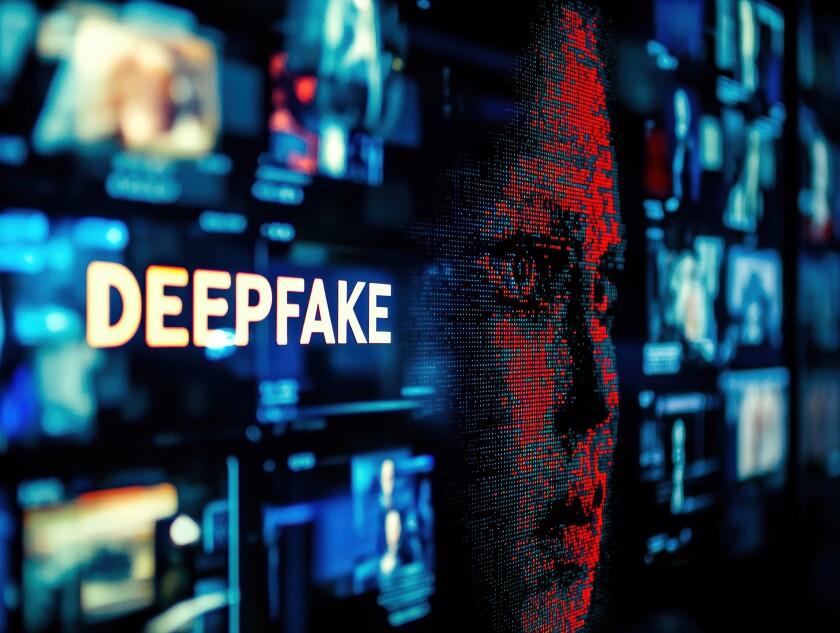Deepfakes represent a major technological advancement in image and video manipulation.
However, their malicious use, particularly in violating the image of women on social media, raises serious legal concerns regarding personal image protection and the liability of artificial intelligence (AI) platforms.
In light of International Women's Day, which takes place on Saturday, March 8, we must focus on the ways to enhance protection against deepfake abuse in France, Europe, and beyond and explore ways to combat this growing issue.
Adapting image rights
In France, image rights are protected by Article 9 of the French Civil Code, which guarantees respect for an individual’s private life.
Article 226-8 of the French Penal Code punishes the non-consensual distribution of a person's image or voice when it is explicitly evident that the content is manipulated.
The French SREN Law, approved in May 2024, to secure and regulate the digital space, reinforces these protections by specifically addressing deepfakes. Under the law, distributing a deepfake without the subject’s consent is punishable by one year's imprisonment and a €15,000 ($16,000) fine, increased to two years and €45,000 if the content is distributed online.
Sexual deepfakes, which disproportionately target women, receive even stricter penalties. Article 226-8-1 of the French Penal Code, introduced by the SREN Law, stipulates a maximum sentence of three years in prison and a €75,000 fine for online distribution.
AI platforms providing deepfake tools play a central role in their proliferation. The European Regulation on AI (AI Act) mandates that providers must apply technical markers to generated content and inform users that images or videos have been artificially created. Non-compliance with these transparency requirements can result in fines of up to €15 million or 3% of global revenue.
Recent cases
Several recent cases illustrate the challenges posed by deepfakes. In November 2024, the French courts condemned Google for indexing violent pornographic videos without the victims' consent, establishing the growing liability of search engines in the diffusion of illicit content.
At the European level, legislative initiatives continue to strengthen the fight against these practices. The European Parliament has adopted amendments to enhance detection, prevention, and penalties for the creation and distribution of deepfake content, particularly those that harm women’s reputations and rights.
Legal remedies for victims
Victims of deepfakes have several remedies available to them under French and European law:
• Interlocutory proceedings: Victims can request the immediate removal of deepfake content from online platforms.
• Holding platforms accountable: Article 6-I-8 of the LCEN law mandates that digital service providers promptly remove illegal content, with penalties for non-compliance.
• Compensation claims: In civil proceedings, victims can seek financial compensation for damage to their image and reputation.
The virality of deepfakes, particularly of a sexual or gendered nature, makes victim protection difficult. However, initiatives are emerging to fight this issue:
• Digital footprinting: tools that track and flag deepfake content across social media and search engines.
• AI-powered detection: solutions such as Meta and Truepic's Deepfake Detection Challenge identify manipulated videos.
Platform liability
While victims can take legal action against deepfake creators, hosting platforms also bear responsibility.
Platforms such as YouTube, TikTok and Instagram have implemented reporting policies, though their effectiveness remains limited.
In January 2024, X (ex-Twitter) faced backlash for its delayed removal of sexually explicit deepfakes, reigniting debates on whether platforms should invest more in proactive content moderation.
The EU’s Digital Services Act (DSA) now requires platforms to implement specific measures for detecting and swiftly removing illicit deepfake content.
The evolution of the legal framework suggests a future in which providers of generative AI models could be held accountable when their technologies enable the production of harmful deepfakes without adequate safeguards.
Conclusion
Deepfakes represent a major legal challenge in protecting image rights and ensuring platform accountability.
Although French and European legislation have introduced stricter penalties and obligations for digital service providers, the rapid spread of sexually explicit deepfakes targeting women reveals the limitations of legal action and the challenges of controlling viral content.
While victims have legal remedies at their disposal, the effectiveness of these measures largely depends on the responsiveness of authorities and platforms. The EU, through the DSA and AI Act, has reinforced obligations for tech companies, yet enforcing these rules remains difficult when companies operate beyond European jurisdiction.
Ultimately, combating deepfakes requires a multifaceted approach that combines legal enforcement, technological advancements, and increased platform responsibility.
Only through coordinated efforts between regulators, technology companies, and civil society can we ensure stronger protections for individuals—especially women—against the misuse of deepfake technology.











